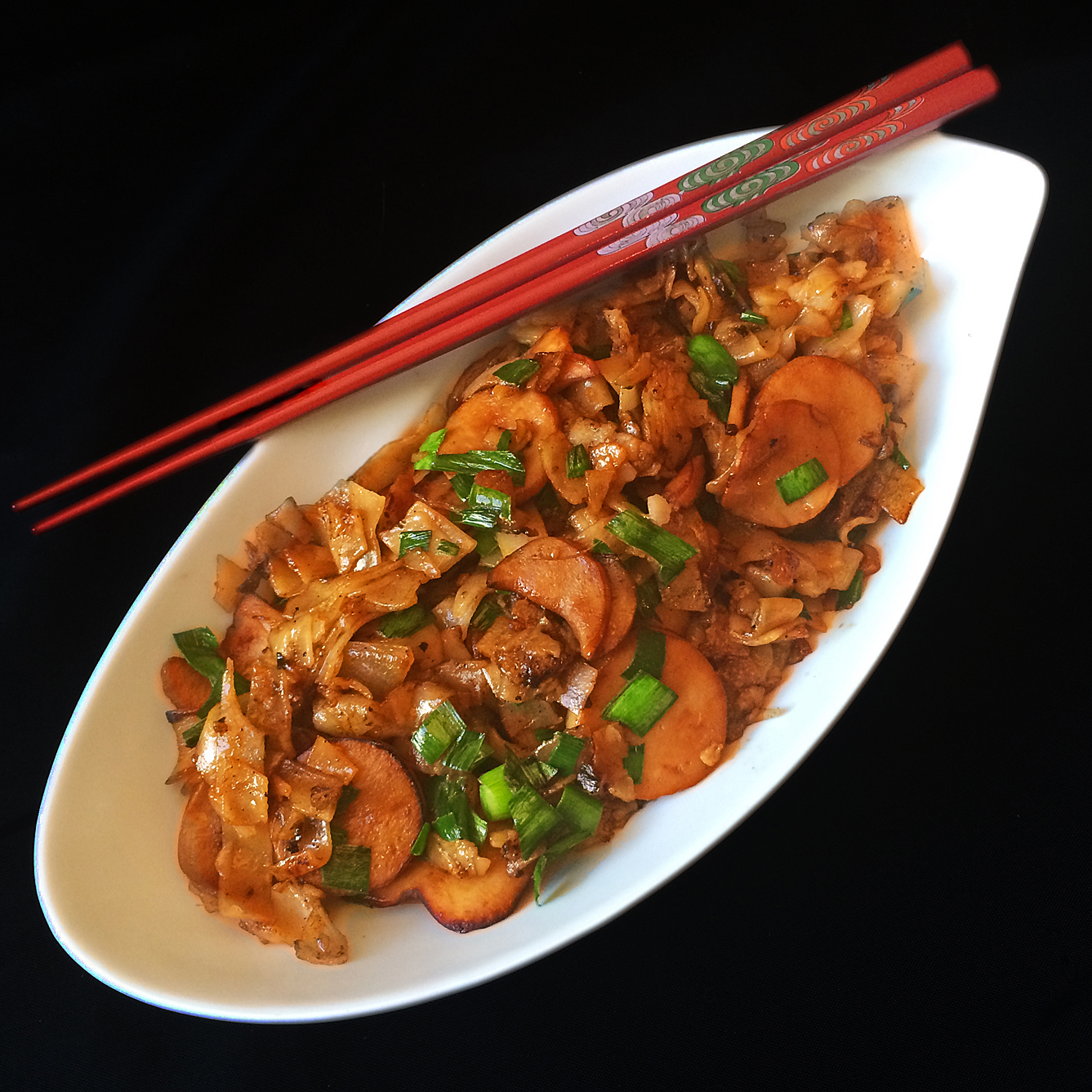(Click on any image to view it in high resolution.)

A post? Now? No time!
Supposed to be making treats for the holidays. Might not even be enough time to get it all done.
But…hungry right now. Need something faster than delivery. Fresh mushrooms in the fridge, rice noodles in the pantry, fresh ginger, garlic, scallions, onions, always a jar of “master sauce” on hand. Boil noodz, chop veg, stir fry, plate.
Time for artsy photo? Nope. Barely in focus.
Time for clever writing? Nope. Not even full sentences.
Lunch served. Back to holiday prep!

Hi,
Would you mind telling me what you use for your ” master sauce ” ?
Thanks !
Thanks for writing, Ken.
Notably used in Shanghai and Eastern China, legitimate Master Sauce is a cooking liquid in which meats are braised. It’s soy sauce based and includes ingredients like rice wine, ginger, star anise and sugar among others, and is the basis for the technique known as “red cooking”. It’s particularly notable because after it has been used for cooking something, it’s reserved and reused; with each application, it becomes richer and more delicious. Think of it as roughly analogous to sourdough starter.
In this case, I’ve purloined the phrase “master sauce” (note that I always put it in quotation marks) for a soy sauce based seasoning sauce that I keep replenishing. For example, leftover dumpling sauce (if it’s good) from a Chinese takeout meal might go into it. There is absolutely nothing authentic about this sauce or my use of the term!
It starts with minced fresh garlic and ginger, soy sauce, Zhenjiang vinegar, Shao Xing cooking wine, MSG, sugar, a little Yibin Yacai (dried preserved mustard stem) and sometimes a drop of sesame oil sneaks in as well; obviously, it changes over its useful lifespan. A good solution if you’re in a hurry!